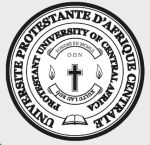Traitement Chirurgical des Fractures du Plancher de l’Orbite au Centre Hospitalier Universitaire Yalgado Ouedraogo
DOI:
https://doi.org/10.5281/hra.v2i3.5411Keywords:
surgical treatment, fracture, orbital floor, CHUYOAbstract
RÉSUMÉ
Introduction. Le but de cette étude était de rapporter le traitement chirurgical des fractures du plancher orbitaire au Centre Hospitalier Universitaire Yalgado Ouédraogo. Méthodologie. Il s’est agi d’une étude transversale descriptive à collecte rétrospective du 1er janvier 2018 au 31 décembre 2022 au Centre Hospitalier Universitaire Yalgado OUEDRAOGO. Tous les patients traités chirurgicalement pour fracture du plancher orbitaire et ayant un dossier médical comprenant les paramètres d’étude ont été retenus. Ces paramètres d’étude étaient d’ordre épidémiologique, anatomo-clinique, thérapeutique et évolutif. Résultat. Au total 169 cas de fractures du plancher orbitaire ont été colligés en cinq ans dont 41 (24,26%) traités chirurgicalement. L’âge moyen des patients opérés était de 33,6 ans ± 6,2 ans. Le sex-ratio était de 4,85. Les accidents de la circulation routière étaient impliqués dans 87,81% des cas. Une fracture du plancher orbitaire avec incarcération graisseuse a été notée chez 63,42% des patients. Les fractures Blow out impur représentaient 82,92% des cas. Des lésions associées ont été retrouvées chez 82,93% des patients. La voie d’abord était transcutanée sous-tarsale dans 68,29% des cas. La désincarcération du plancher plus reconstruction par greffon était le geste chirurgical réalisé dans 51,22% des cas. L’évolution a été favorable dans 73,17% au prix de séquelles esthétiques et fonctionnelles (26,83%). Conclusion. Ces résultats appellent aux renforcements de la sécurité routière et des plateaux techniques des hôpitaux ainsi que la levée des barrières financières aux soins.
ABSTRACT
Introduction. The aim of this study was to report on the surgical treatment of orbital floor fractures at the Yalgado OUEDRAOGO University Hospital. Methodology. This was a descriptive retrospective transverse study from 1st january 2018 to 31st december 2022 at the Yalgado OUEDRAOGO University Hospital. All patients who had surgery for orbital floor fracture and whose medical records included the study parameters were included. These study parameters were epidemiological, anatomo-clinical, therapeutic and evolutive. Results. A total of 169 cases of orbital floor fractures were recorded over five years, of which 41 (24.26%) were treated surgically. The mean age of the patients operated on was 33.6 ± 6.2 years. The sex ratio was 4.85. Road traffic accidents were involved in 87.81% of cases. A fracture of the orbital floor with fat incarceration was noted in 63.42% of subjects. Blow-out fractures accounted for 82.92% of cases. Associated lesions were found in 82.93% of subjects. The approach was transcutaneous under the tarsus in 68.29% of cases. Removal of the floor and reconstruction with a graft was the surgical procedure performed in 51.22% of cases. The outcome was favourable (73.17%) at the cost of aesthetic and functional sequelae (26.83%). Conclusion. These results call for improvements in road safety and hospital technical facilities, as well as the removal of financial barriers to care.
References
Erdmann D, Follmar KE, DeBruijn M, Bruno AD, Jung SH, Edelman D et al. Retrospective Analysis of Facial Fracture Etiologies. Ann Plast Surg 2008 ;60(4) :398‑403.
Somogyi M, Vrcek I, Nakra T, Durairaj V. Orbital Floor Fracture Management. Adv Ophthalmol Optom 2017 ;2(1) :409‑20.
Nguyen A, Ho T, Czerwinski M. Safety of Outpatient Isolated Orbital Floor Fracture Repair. J Craniofac Surg 2016 ;27(7) :1686‑8.
Eric Z, Timothy YC, Alec JC, Stacy MSK, Brittany MP, Jaffer Na et al.Orbital Fractures and Risk Factors for Ocular Injury. Clin Ophthalmol 2022 ; 16 : 4153-61.
Ozturker C, Sari Y, Ozbilen KT, Ceylan NA, Tuncer S. Surgical Repair of Orbital Blow-Out Fractures : Outcomes and Complications. Beyoglu Eye J 2022 ; 7(3) : 199–206.
Touil H, Mabrouk H, Msellmi F, Bouzaiene M. Reconstruction des fractures du plancher orbitaire par mèche de Polypropylène Reconstruction of orbital floor fractures with Polypropylen mesh. Tunis Med 2020 ;98(1) :49-54.
Seifert LB, Mainka T, Herrera-Vizcaino C, Verboket R, Sader R. Orbital floor fractures : epidemiology and outcomes of 1594 reconstructions. Eur J Trauma Emerg Surg 2022 ;48(2) :1427‑36.
Burnstine MA. Clinical recommendations for repair of orbital facial fractures. Curr Opin Ophthalmol 2003 ;14 :236-40.
Homer N, Huggins A, Durairaj VD. Contemporary management of orbital blowout fractures. Curr Opin Otolaryngol Head Neck Surg 2019 ;27(4) :310‑6.
Koné R, Zégbeh NEK, Diarra MS, Touré A, Guindo A, Sidibé O an coll. Prise en charge des fractures du plancher de l’orbite en blow-out : à propos de 10 cas au Centre Hospitalier Universitaire du Centre National d’Odonto-Stomatologie de Bamako. Rev col Odont-Stomatol Afr Chir Maxillo-fac 2020 ; 27 :40-44.
Hartwig S, Nissen MC, Voss JO, Doll C, Adolphs N, Heiland M et al. Clinical outcome after orbital floor fracture reduction with special regard to patient’s satisfaction. Chin J Traumatol 2019 ;22(3) :155‑60.
Adam S, Sama HD, Akpoto YM, Bissa H, Agoda P, Foma W and al. Orbital Floor Fractures : Epidemiological, Clinical and Therapeutical Study at Sylvanus Olympio University Teaching Hospital in Lome about 51 Cases. Open J Stomatol 2021 ;11(09) :373‑86.
Moussa M, Abba KHY, Bancolé PSA. Traitement des Fractures de Lefort II à l’Hôpital National de Niamey (Niger). Health Sci Dis 2020 ; 21, (6) :37-41
Kothari NA, Avashia YJ, Lemelman BT,Mir HS, Thaller SR.Incisions for orbital floor exploration. J Craniofac Surg 2012 ;23 :1985-89.
Pidro A, Jovanovic N, Kadribašic E, Barucija N, Leto N, Kahana A. Delayed management of an orbital floor blow-out fracture. Beyoglu Eye J 2021 ; 6(3): 249–253.
Yamashita M, Kishibe M, Shimada K. Incidence of lower eyelid complications after a transconjunctival approach: influence of repeated incisions. J Craniofac Surg 2014 ;25 : 1183-86.
Kaufman Y, Stal D, Cole P, Hollier L. Orbitozygomatic fracture management. Plast Reconstr Surg 2008 ;121(4) :1370‑4.
Gunarajah DR, Samman N. Biomaterials for repair of orbital floor blowout fractures : a systematic review. J Oral Maxillofac Surg 2013 ;71(3) :550‑70.
Bratton EM, Durairaj VD. Orbital implants for fracture repair. Curr Opin Ophthalmol 2011 ;22(5) :400‑6.
Lee HBH, Nunery WR. Orbital adherence syndrome secondary to titanium implant material. Ophthalmic Plast Reconstr Surg 2009 ;25(1) :33‑6.
Brucoli M, Arcuri F, Cavenaghi R, Benech A. Analysis of complications after surgical repair of orbital fractures. J Craniofac Surg 2011 ;22(4) :1387‑90.
Downloads
Published
How to Cite
Issue
Section
License
Authors who publish with this journal agree to the following terms:
- Authors retain copyright and grant the journal right of first publication with the work simultaneously licensed under a Creative Commons Attribution License CC BY-NC-ND 4.0 that allows others to share the work with an acknowledgement of the work's authorship and initial publication in this journal.
- Authors are able to enter into separate, additional contractual arrangements for the non-exclusive distribution of the journal's published version of the work (e.g., post it to an institutional repository or publish it in a book), with an acknowledgement of its initial publication in this journal.
- Authors are permitted and encouraged to post their work online (e.g., in institutional repositories or on their website) prior to and during the submission process, as it can lead to productive exchanges, as well as earlier and greater citation of published work










